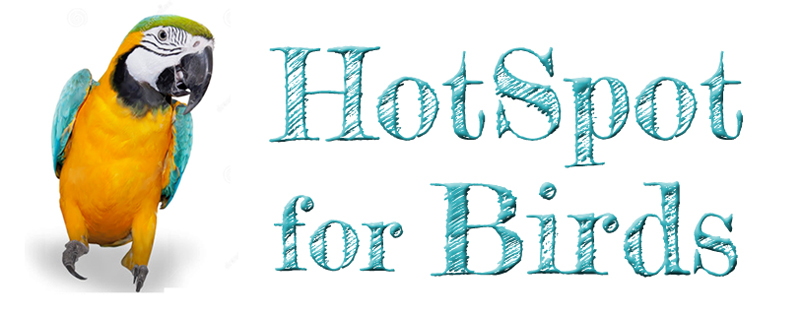Dealing With Vitamin A Deficiency in Birds
by Hannis L. Stoddard, III, DVM
Vitamin A deficiency can be disastrous for your bird -- but it's preventable
The most common preventable avian disease that we see at our practice is hypovitaminosis A, or vitamin A deficiency, with or without accompanying secondary infections. Pet birds that eat only seeds (especially sunflower seeds and peanuts) are most prone to this problem because an all-seed diet is low in vitamin A.
When vitamin A deficiency occurs, the cells that line the respiratory, reproductive and digestive tracts undergo structural change, making them unable to secrete mucous. Since mucous acts as a protective blanket to prevent invasion from pathogens (disease- causing agents), vitamin A deficiency allows environmental bacteria and other microorganisms to penetrate the mucous membrane barrier and set up "housekeeping" within these tissues.
Symptoms of vitamin A deficiency depend on which organ system is affected (for instance the reproductive, digestive, or respiratory tracts) and which microorganism or combination of microorganisms is invading the patient.
The respiratory system is the most often affected. Since the mouth and sinus are also lined by the cells that are compromised, you need only look inside the bird's mouth to see the early signs of this deficiency. Initially, you see small white plaques on the roof of the mouth and/or at the base of the tongue. The plaques ultimately become infected, forming large, obvious abscesses. The abscesses can distort the glottis (opening of the windpipe), causing labored breathing and eventually mechanical suffocation. The abscesses can even grow so large that they block the choana (the slit in the roof of the mouth). When this happens, the bird will exhibit profuse nasal discharge and obvious swelling around the eyes. The pain from these pockets of infection will eventually cause the bird to starve. The microorganisms can also spread throughout the bird's body with disastrous consequences.
A bird with vitamin A deficiency may show any of the following symptoms: sneezing, wheezing, nasal discharge, crusted or plugged nostrils, unthriftiness lethargy, depression, diarrhea, tail-bobbing, thinness, poor feather color, swollen eyes, ocular discharge, lack of appetite, gagging, foul-smelling breath and "slimy mouth".
Few patients, if any, die as a direct result of the vitamin A deficiency. They usually die from the secondary infections common to birds with weakened resistance and the inability of the body to go through normal cellular regeneration (to heal itself). The secondary infections may cause organ damage that will then lead to the bird's eventual death. Consequently, we treat the life-threatening infection first, dealing with the underlying vitamin A deficiency with injections of vitamin It.
To treat the secondary life-threatening component, we first conduct a series of diagnostic tests. We draw blood to help determine which organs are involved, we perform cultures and antibiotic sensitivities to determine what bacteria or fungi may be present, and we analyze the stools to check for parasites.
We then hospitalize-the bird for at least one week and treat it with appropriate medications based on the data from the tests. Often we also nebulize the bird, tube-feed it and surgically lance the abscesses once the patient is stable. Although the bird may require a fairly long recovery period, the prognosis is usually favorable unless secondary problems have caused irreversible organ damage.
Once again, the adage "An ounce of prevention is worth a pound of cure" applies with this malady. Psittacines are generally quite resistant to disease, but, once afflicted, they are often difficult to cure. This is especially true if the disease is induced by an inadequate diet, which is often compounded many times by the selective feeding habits of the birds.
The majority of vitamin A deficient diets are also lacking in other vitamins, proteins and minerals, so prevention must be aimed at an overall improvement in nutrition as well as offering appropriate vitamin supplementation. In addition to a good quality, safflower seed-based mix, parrots should be offered and taught to eat foods that are yellow and deep green in color (with a few exceptions).
To ensure your bird against a vitamin A deficiency, offer it foods such as cantaloupe, papaya, chili peppers, broccoli leaves and flowers, carrots, sweet potatoes, turnip leaves, collards, endive, butter, liver, egg yolks, beets, dandelion greens and spinach (see chart for relative vitamin A content). The daily use of one of the many good quality powdered vitamins will also help keep this common, preventable disease from afflicting your birds.
Vitamin A Content
| Desirable Food |
IU Per 100 Grams |
| Red chili peppers (fresh) |
21,000 |
| Red chili peppers (dried) |
16,000 |
| Broccoli leaves |
77,000 |
| Broccoli flowers |
3,000 |
| Carrots (pureed) |
10,000 |
| Sweet potatoes |
9,000 |
| Turnip leaves |
7,500 |
| Collards |
6,500 |
| Endive |
3,500 |
| Dandelion greens |
14,000 |
| Spinach |
8,000 |
| Butter |
3,500 |
| Beef liver |
45,000 |
| Egg yolks |
3,000 |
| Canteloupe |
4,000 |
| Mango |
5,000 |
| Papaya |
2,000 |
| Foods Low in Vitamin A |
| Corn |
Lettuce |
| Summer squash |
Bananas |
| White potatoes |
Apples |
| Grapes |
Oranges |
Please Give Us a Link
If you found our site to be useful, please link our website to yours. We really appreciate any help we can get in making our avian health and safety articles readily available.
|
Contact Information

